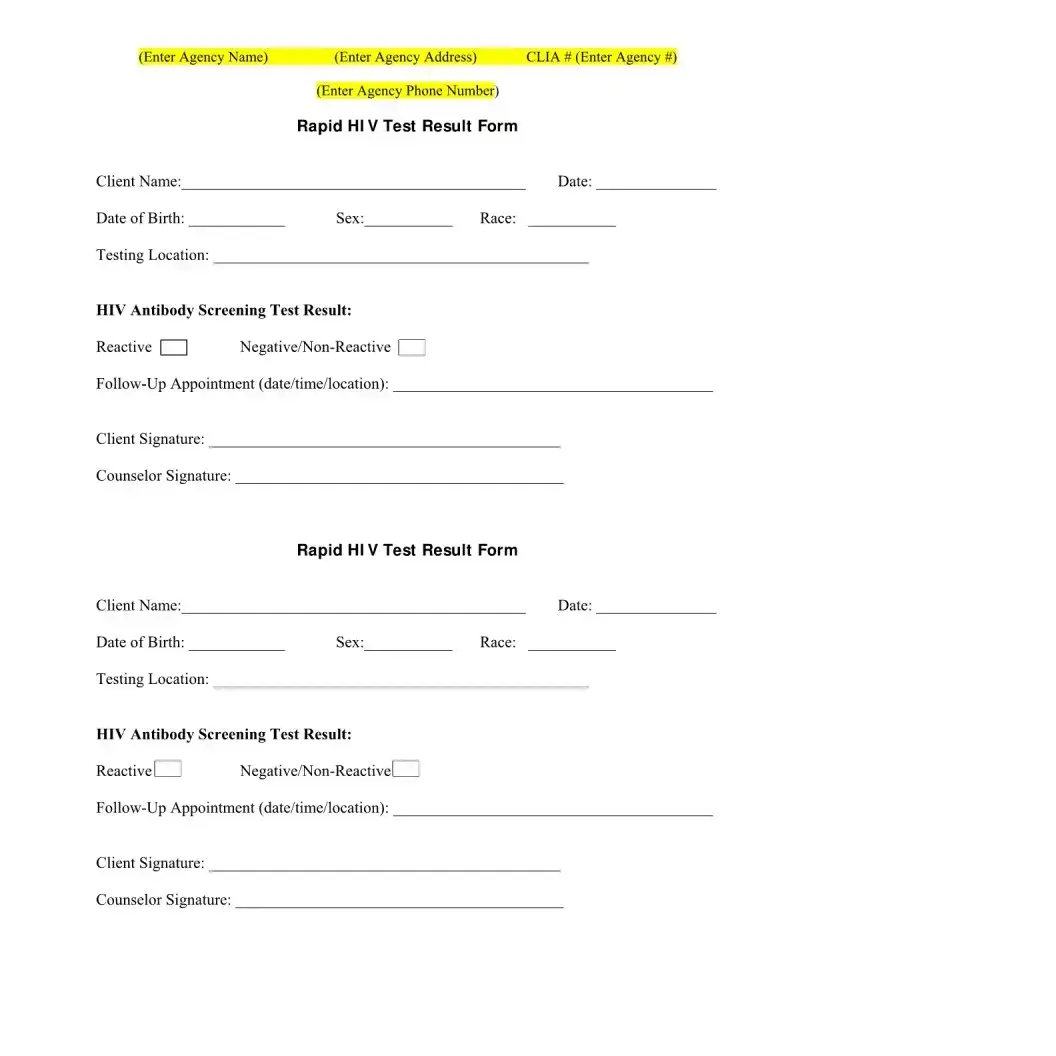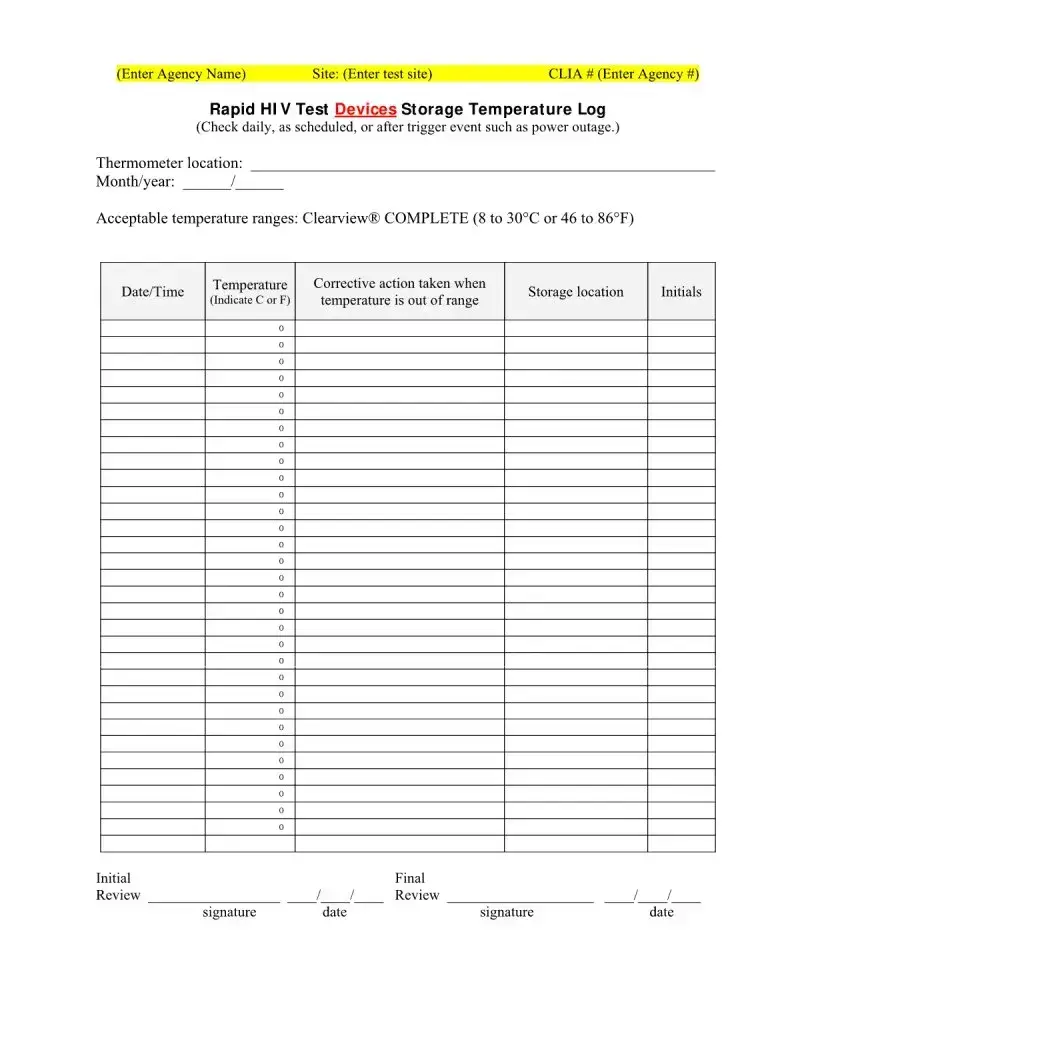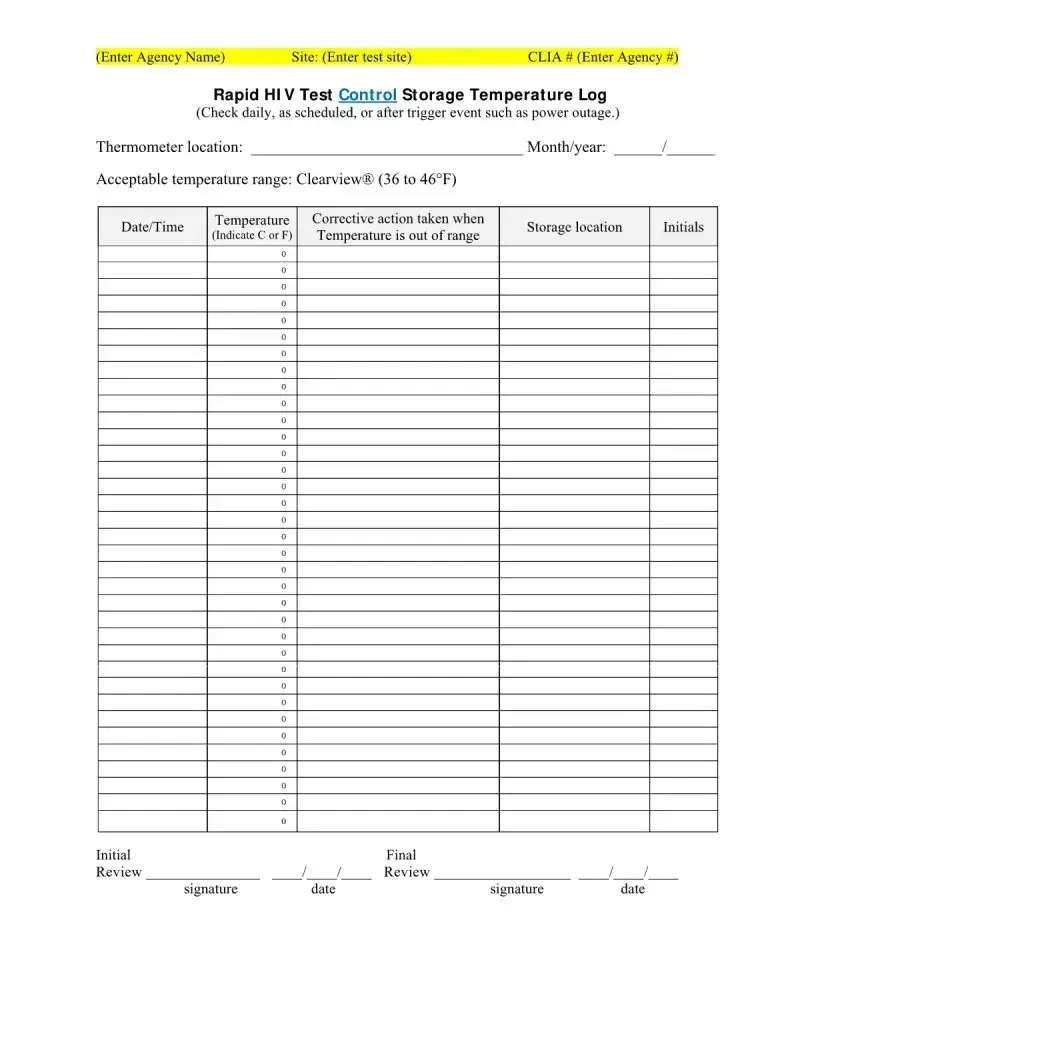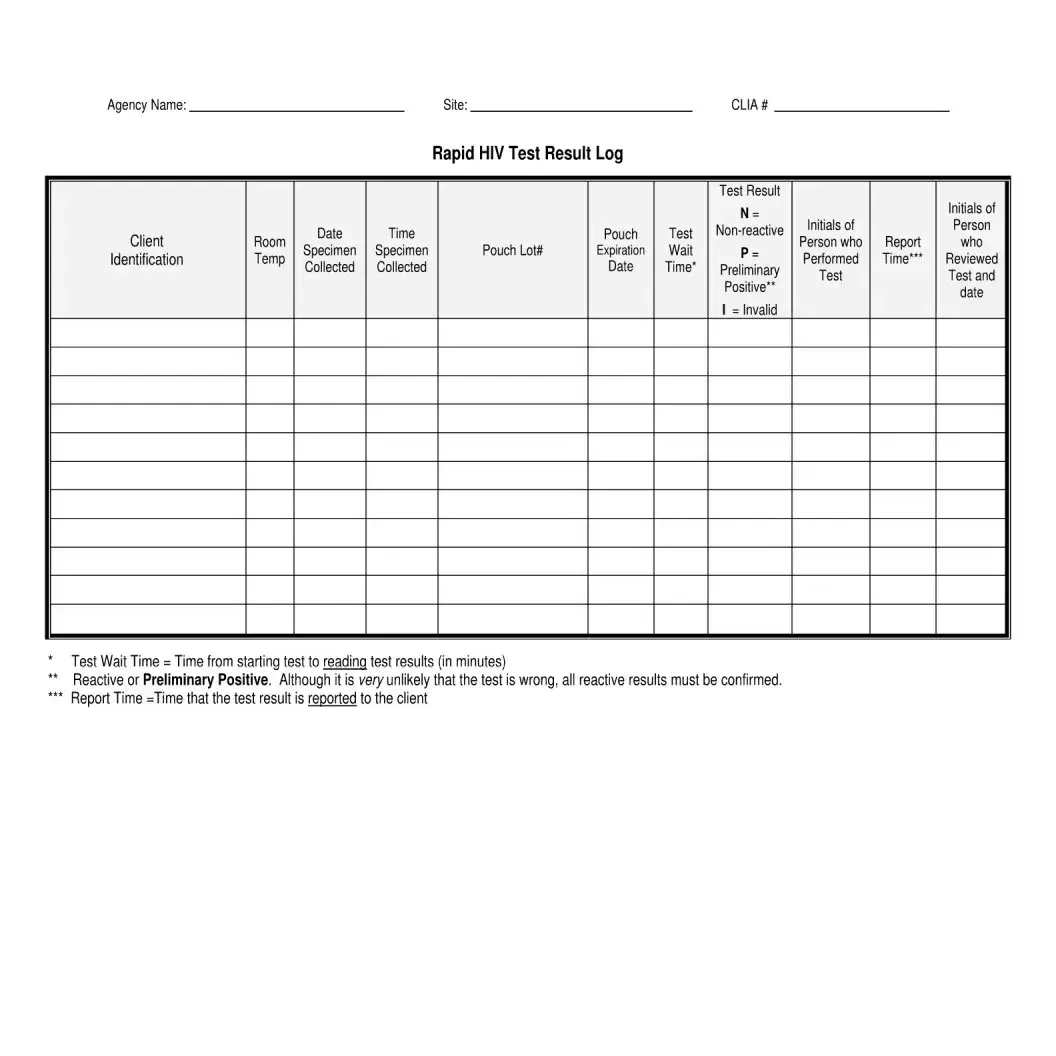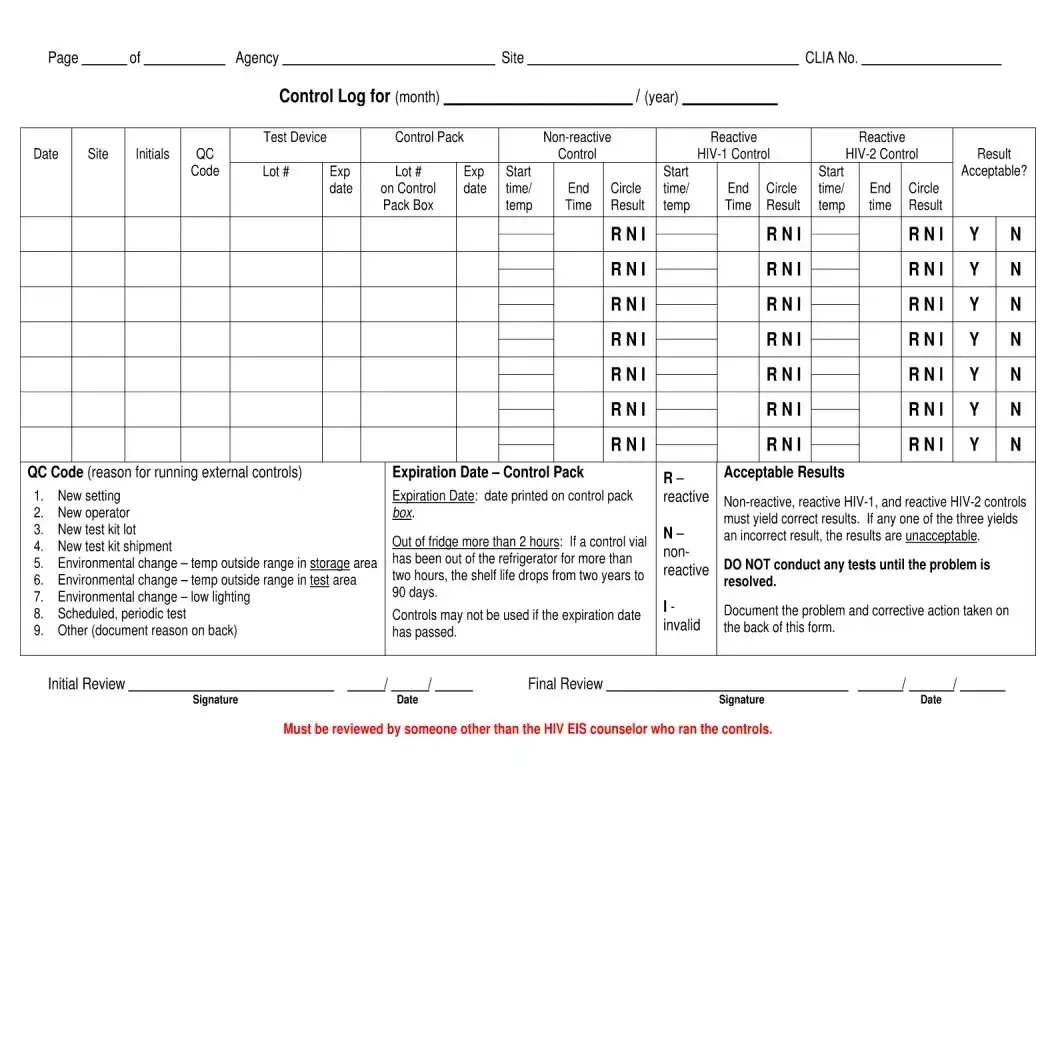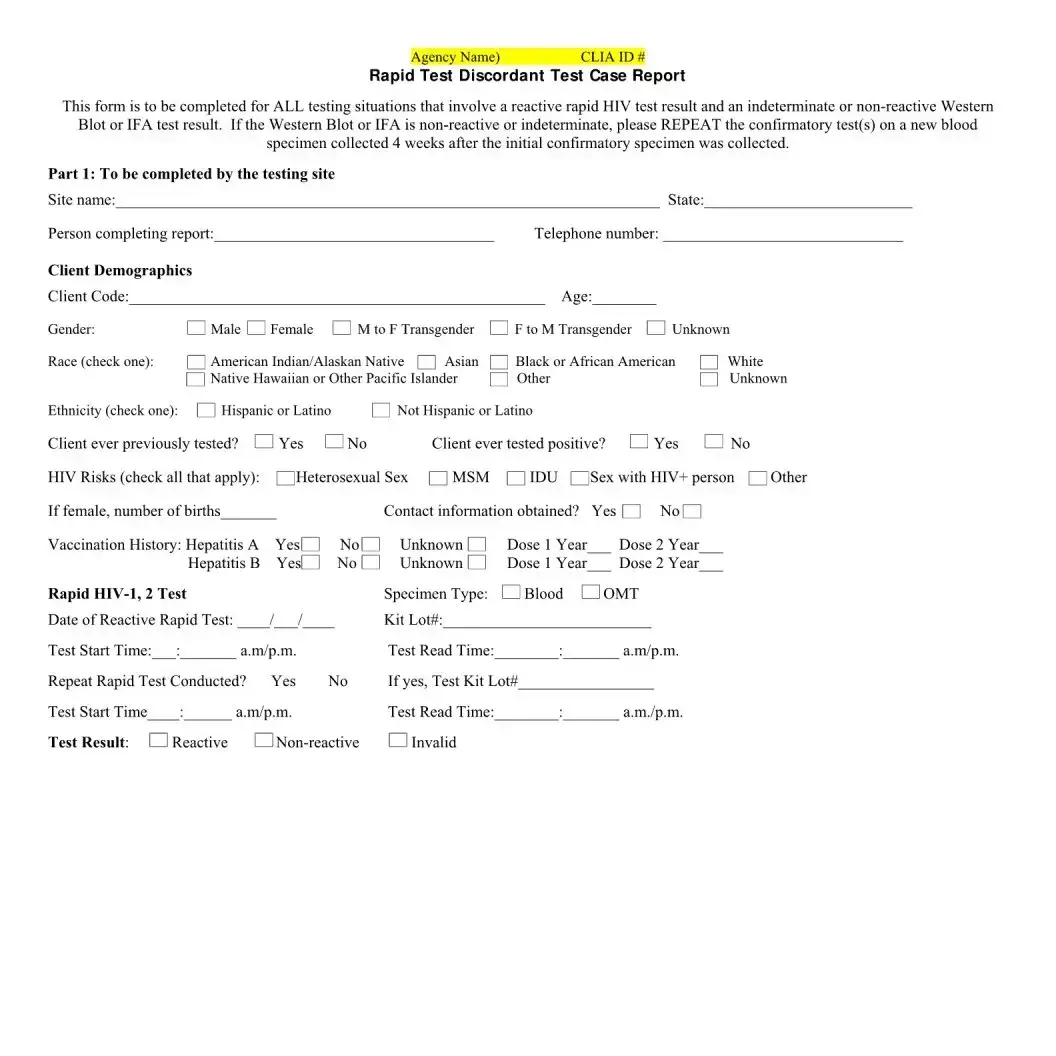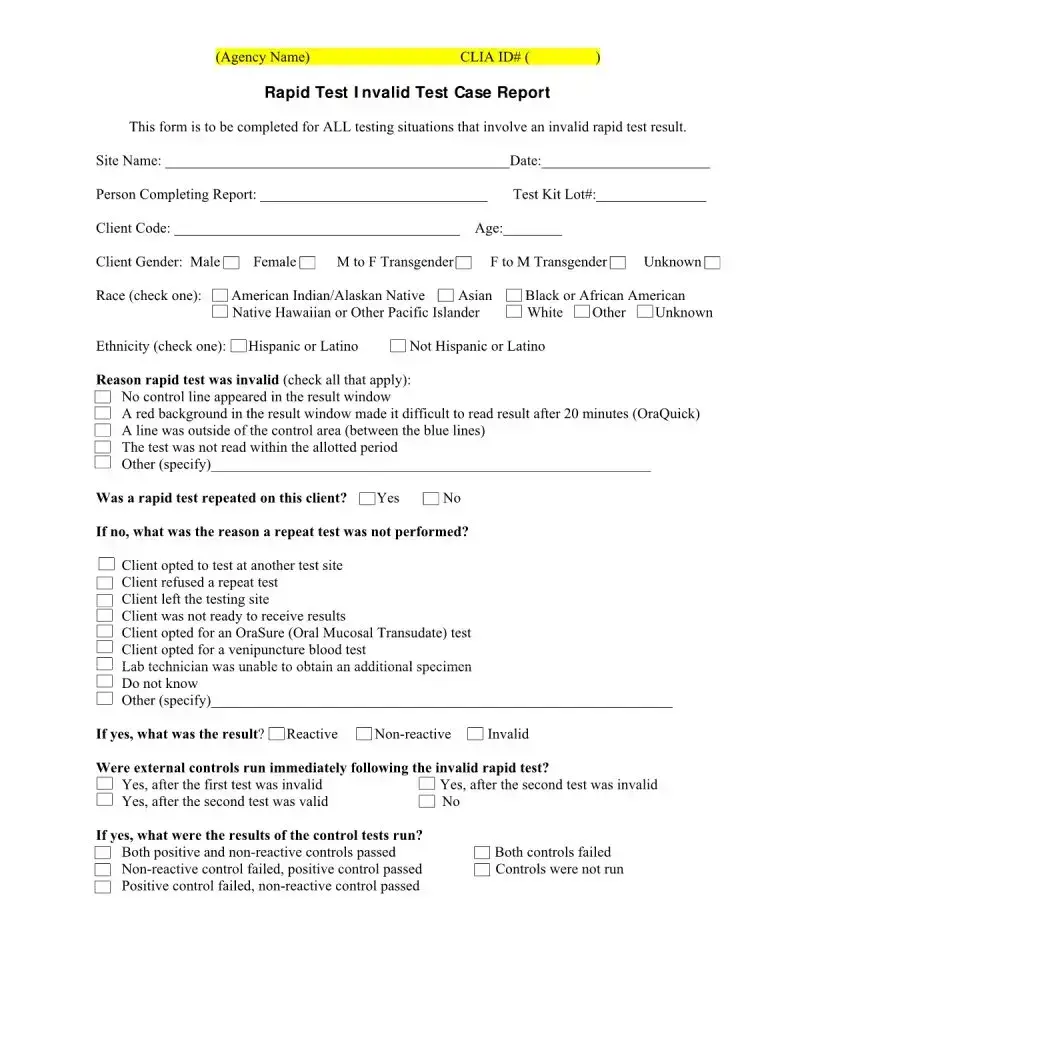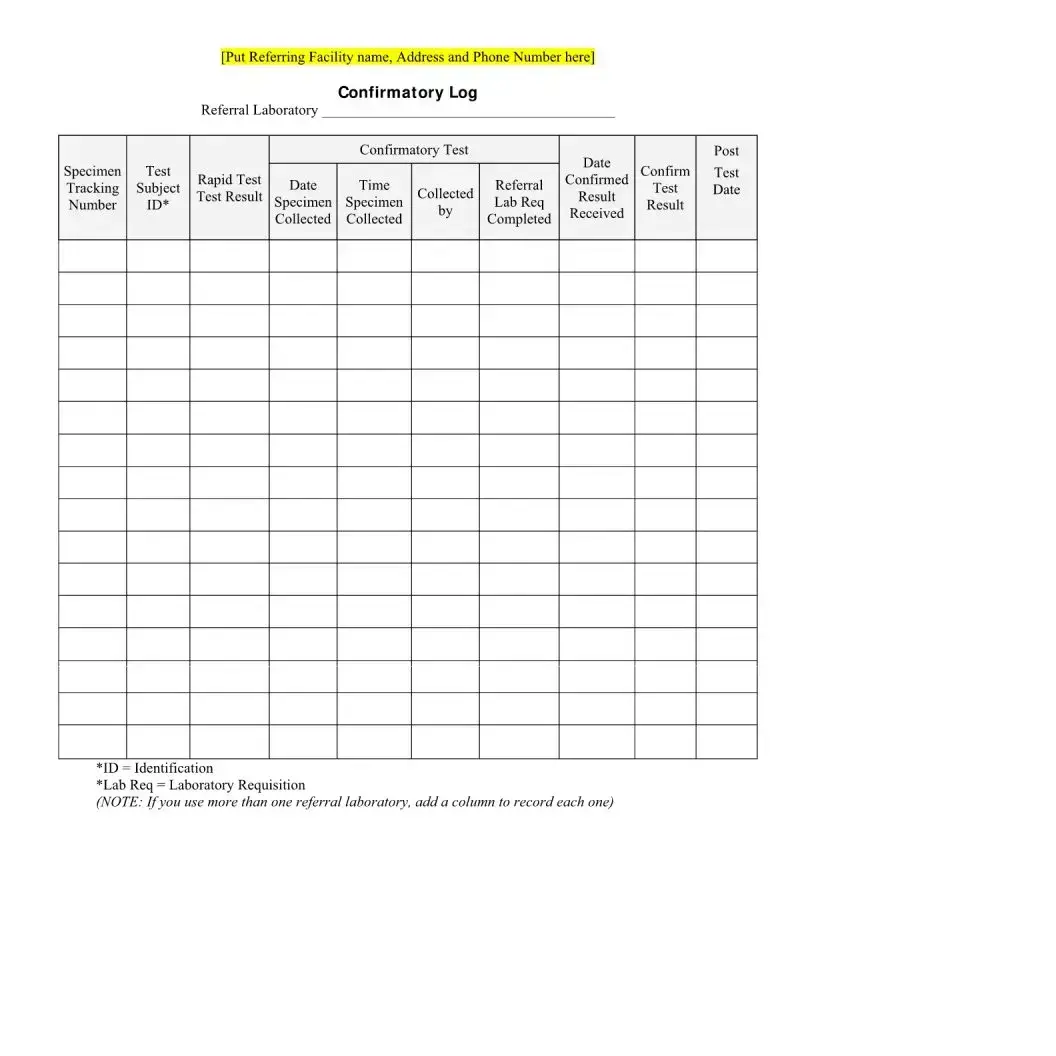The Negative HIV Test form is a crucial document used in the testing process for HIV, ensuring that clients receive accurate and timely results. This form contains essential information, including the client's name, date of birth, and race, as well as details about the testing location and the results of the HIV antibody screening. A clear indication of whether the result is reactive or negative/non-reactive is prominently displayed, allowing for immediate understanding. Additionally, the form provides space for follow-up appointments, ensuring that clients have a clear path forward after receiving their results. Signatures from both the client and the counselor verify the authenticity of the document. It is important to note that the form also includes a section for temperature logs related to the storage of rapid HIV test devices and controls, which must be monitored regularly to maintain accuracy. These logs document the acceptable temperature ranges and any corrective actions taken if temperatures fall outside these ranges. Overall, the Negative HIV Test form serves as a comprehensive tool for both clients and healthcare providers, facilitating effective communication and follow-up in the context of HIV testing.

